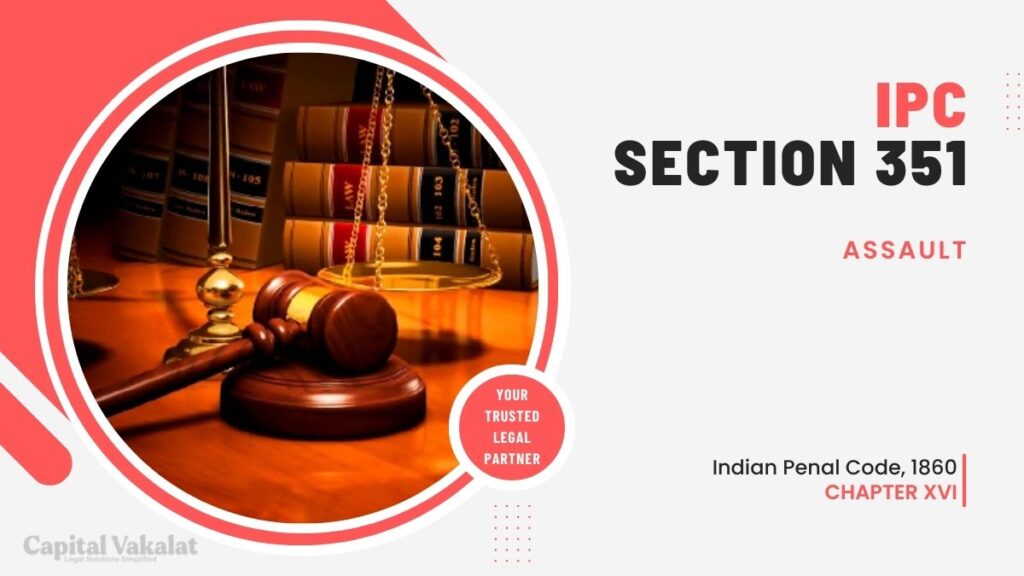In our dynamic society, understanding the legal intricacies surrounding assault is paramount. One such facet of the legal framework is Section 351 of the Indian Penal Code (IPC), which delves into the various dimensions of assault. In this article, we’ll embark on a comprehensive exploration of Section 351 IPC, unraveling its nuances, implications, and the broader legal context.

Assault, a term laden with gravity, has far-reaching implications in legal circles. Section 351 of the IPC is a pivotal component in defining and addressing this offense. Let’s delve into the depths of this legal provision to demystify its provisions and understand its application.
The Essence of Section 351 IPC
Section 351 IPC is succinct yet comprehensive in its definition of assault. It encompasses not only physical harm but also the apprehension of harm. The section takes into account the intentional infliction of force or the threat of it, elucidating the varied scenarios where assault can manifest.
Degrees of Assault: A Spectrum of Offenses
Assault is not a one-size-fits-all concept. Section 351 recognizes this by incorporating different degrees of assault, each carrying distinct legal consequences. From simple assault to aggravated forms, the section provides a framework for classifying and prosecuting offenses based on their severity.
Legal Precedents: Shaping Interpretations of Section 351 IPC
The interpretation of Section 351 has evolved through legal precedents, creating a rich tapestry of case law. Examining notable cases provides insight into the practical application of the section, shedding light on how courts have navigated the complexities of assault charges.
Defenses Against Section 351 Charges
Understanding the defenses available is crucial for both legal professionals and individuals facing assault charges. Section 351 IPC acknowledges certain circumstances where force may be justifiably used, serving as a shield against unwarranted accusations. Exploring these defenses is essential for a comprehensive comprehension of the legal landscape.
The Intersection of Technology and Assault
In an era dominated by technology, the contours of assault have expanded. Cyber-assault, a relatively novel concept, challenges traditional legal frameworks. Section 351, though crafted in a different era, is being tested in contemporary courts as they grapple with the nuances of online threats and harassment.
Navigating the Legal Process: From Complaint to Verdict
For those involved in assault cases, understanding the legal process is pivotal. From filing a complaint to the final verdict, the journey through the justice system is a labyrinthine process. This section provides a step-by-step guide, demystifying the legal journey for both complainants and defendants.
Impact on Personal and Professional Lives
Assault charges extend beyond the courtroom, affecting personal and professional lives. The societal repercussions of being accused or convicted of assault are profound. Exploring the collateral consequences offers a holistic perspective on the enduring impact of such legal entanglements.
Challenges in Prosecuting Assault Cases
The prosecution of assault cases is not without challenges. Section 351, while comprehensive, leaves room for ambiguity. Exploring these challenges provides insight into the dynamics of legal battles, offering a nuanced understanding of the difficulties faced by both the prosecution and the defense.
The Role of Section 351 in Social Justice
Beyond its punitive nature, Section 351 plays a role in advancing social justice. Examining how this legal provision intersects with broader societal issues such as gender-based violence and discrimination sheds light on its potential as a tool for societal transformation.
Balancing Legal Rigor with Compassion
In navigating the complexities of Section 351 IPC, it’s imperative to strike a balance between legal rigor and compassion. Understanding the human stories behind assault cases allows for a more empathetic approach, fostering a legal system that seeks not only justice but also rehabilitation.
Conclusion
Section 351 of the IPC stands as a sentinel in the legal landscape, defining the boundaries of acceptable behavior and delineating consequences for transgressions. As we traverse the multifaceted terrain of assault, it becomes evident that Section 351 is not just a legal provision but a societal compass, guiding us toward a more just and equitable coexistence.
Frequently Asked Questions
How does Section 351 address self-defense?
Section 351 recognizes the right to self-defense, allowing individuals to use reasonable force to protect themselves from imminent harm.
What distinguishes simple assault from aggravated assault under Section 351?
The severity of the harm inflicted or the circumstances surrounding the assault differentiate simple assault from aggravated forms, influencing the legal consequences.
Are there specific defenses for online threats under Section 351?
While not explicitly outlined, defenses such as lack of intent or insufficient evidence can be applicable in cases involving online threats.
How long does the legal process take in an assault case under Section 351?
The duration varies, but the legal process typically involves filing a complaint, investigation, trial, and verdict, which can span several months or even years.